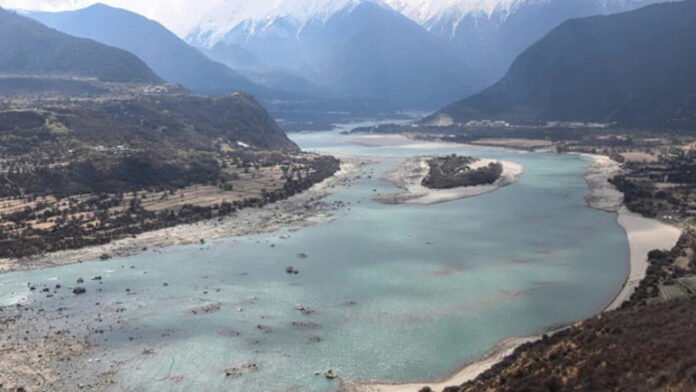China has officially commenced construction of a colossal hydropower project on the Yarlung Tsangpo river in Tibet, which flows into India as the Brahmaputra. The groundbreaking ceremony was held on Saturday in the southeastern Tibetan city of Nyingchi, with Premier Li Qiang in attendance, according to Chinese state media.
The dam, part of a series of planned hydropower stations, is being hailed by China as a vital component of its broader carbon neutrality and economic development objectives, particularly in the remote Tibet Autonomous Region. Once completed, it is expected to rival or even surpass the scale of the Three Gorges Dam — currently the world’s largest power station — in terms of capacity and engineering scale.
China’s official news agency Xinhua reported that the electricity generated from the project will be transmitted primarily to other provinces across the country while also fulfilling local energy demands in Tibet.
A $167 Billion Investment with Cross-Border Implications
The megaproject is set to involve the construction of five large hydropower stations, with a projected total investment of approximately 1.2 trillion yuan (equivalent to $167.1 billion). Chinese authorities had approved the project in December 2023, aligning it with national strategies for green energy and regional development.
However, the development has reignited geopolitical and environmental concerns, particularly in neighboring India and Bangladesh, through which the river flows downstream.
India Raises Red Flags Over Potential Impact
India has repeatedly expressed apprehensions about China’s hydropower ambitions on transboundary rivers, citing risks to water security, ecological balance, and livelihoods of millions living along the Brahmaputra basin.
In January, India’s Ministry of External Affairs confirmed that it had conveyed its concerns to Beijing, emphasizing the need for China to avoid actions that could negatively affect downstream flow. “We will continue to monitor developments and take necessary measures to protect our national interests,” the ministry stated at the time.
New Delhi also urged China to uphold transparency and ensure that downstream nations are not adversely affected by upstream activities. The Brahmaputra is a critical water source for India’s northeastern states and plays a vital role in the regional agriculture, fishing, and power generation sectors.
China Says No Harm Will Come
Responding to the concerns, China’s foreign ministry in December had claimed that the project would not cause any “negative impact” downstream. Beijing maintained that it would “maintain communication with countries along the lower reaches of the river” to avoid tension.
Nonetheless, experts argue that the lack of a formal water-sharing agreement between China and India complicates matters. The two Asian giants have no binding treaty governing the use or construction on transboundary rivers, adding layers of mistrust, particularly amid an already fraught diplomatic relationship.
Environmental Warnings Over the Tibetan Plateau
Aside from geopolitical tensions, the environmental impact of such massive infrastructure projects on the ecologically fragile Tibetan plateau has also come under scrutiny.
Conservationists and climate researchers have long cautioned against overdevelopment in the region, which acts as a water tower for much of Asia. Large dams can alter river ecosystems, displace local populations, and potentially trigger seismic activity in the seismically active Himalayas.
“This kind of large-scale intervention in a sensitive zone like Tibet could have consequences not just for the immediate area, but for biodiversity and water security across borders,” said a senior environmental researcher based in Kathmandu.
Strained Borders and Fragile Peace
The latest development also comes amid long-standing military tensions between India and China along their disputed Himalayan border, which stretches over 3,400 kilometers. In recent years, both sides have bolstered troop deployments and infrastructure along the frontier, especially after the deadly Galwan Valley clash in 2020.
While official statements on the dam project have avoided direct references to the border tensions, analysts note that infrastructure developments in contested or sensitive regions often have strategic undertones, beyond mere economic motives.
What Lies Ahead
As China moves forward with its ambitious hydropower goals, India’s watchful stance signals a deepening of strategic vigilance in the region. Though China insists the project is purely developmental, the lack of concrete multilateral mechanisms for transboundary river governance continues to fuel mistrust.
Meanwhile, millions downstream — from Arunachal Pradesh and Assam in India to northern Bangladesh — await clarity on how this project will shape the future flow of one of South Asia’s most critical rivers.



































